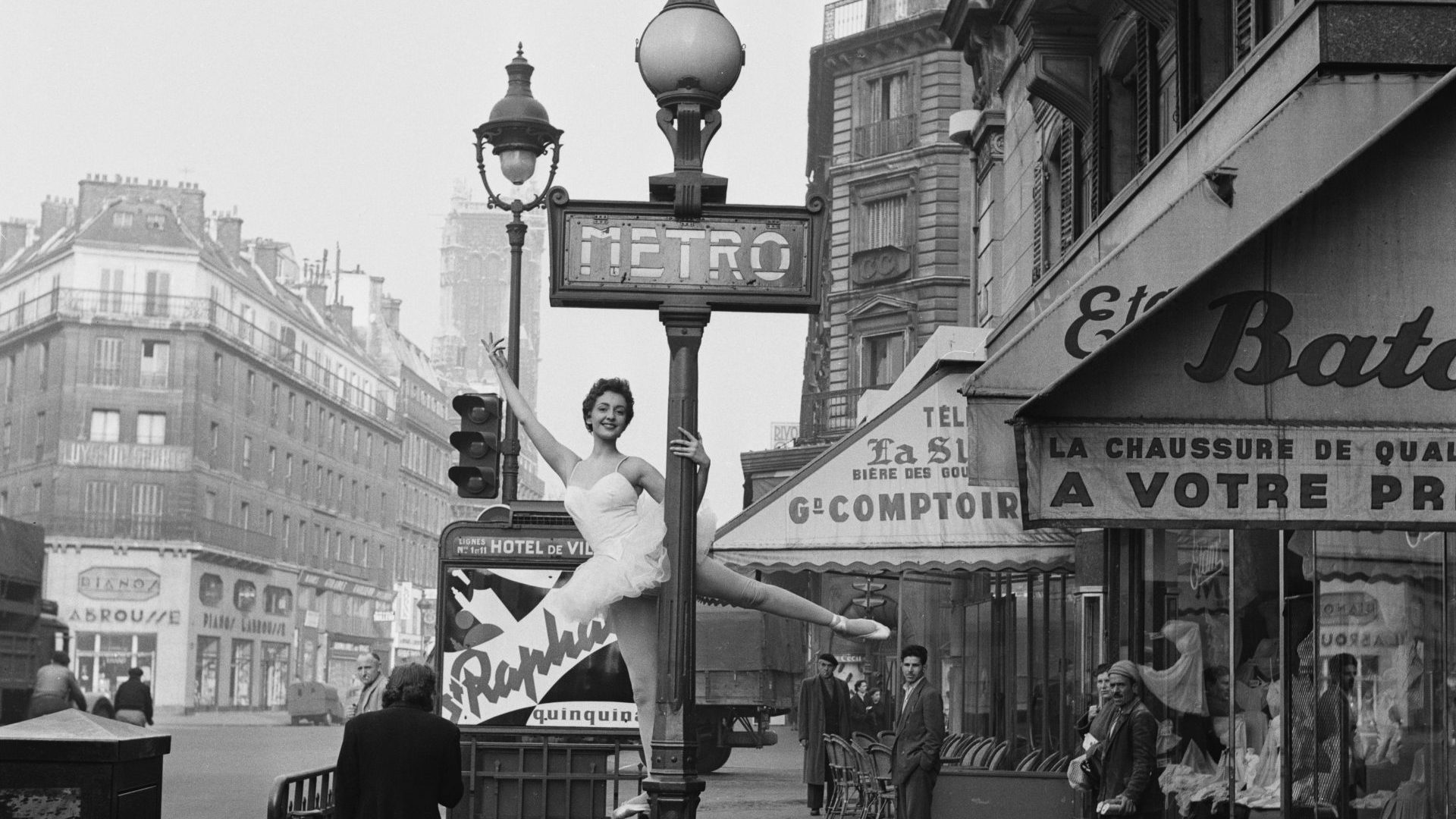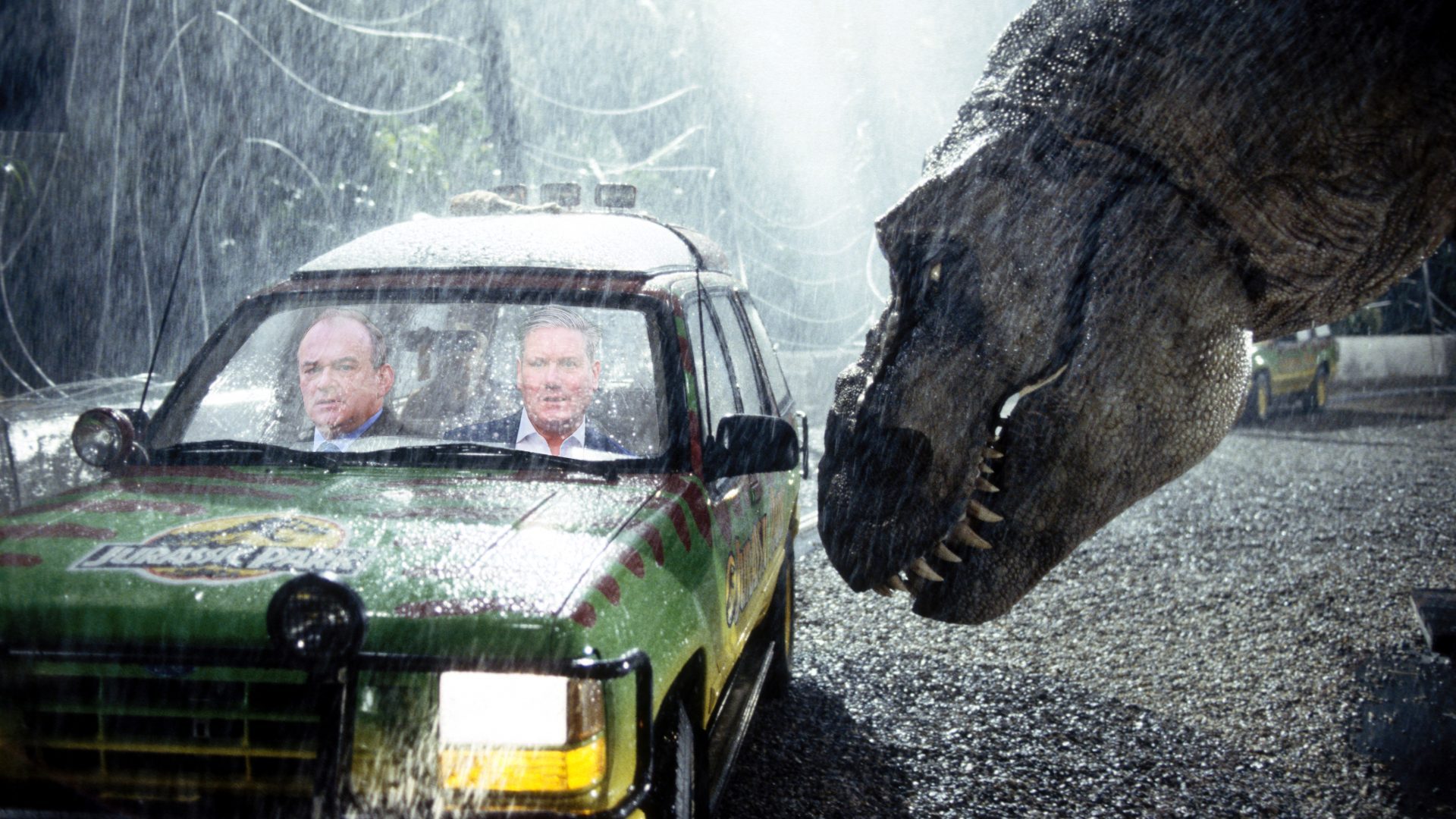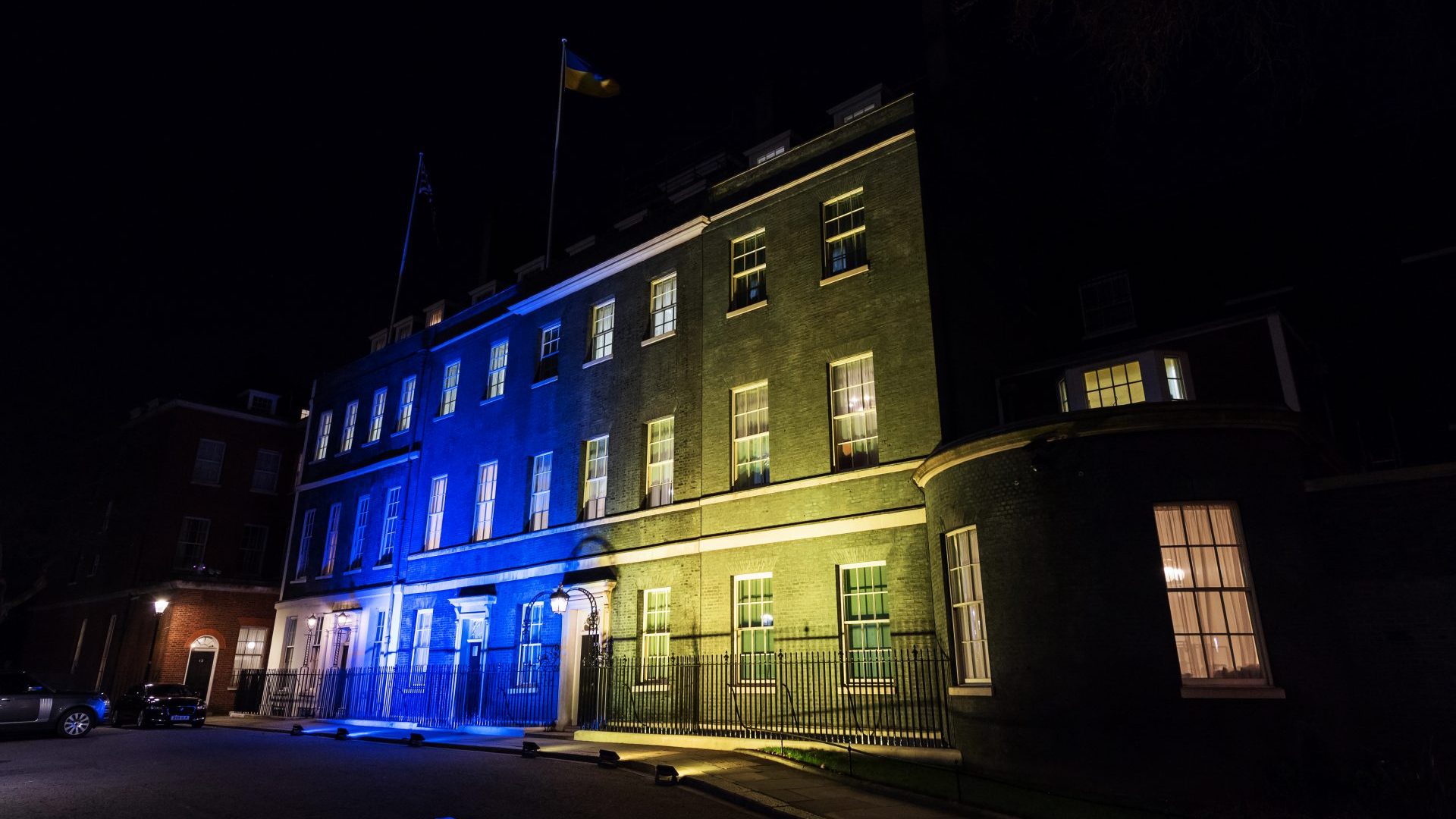Of all the travel experiences I’ve most missed over the past two years, the absence felt most keenly is using the Paris Métro. Pre-pandemic, I went to Paris every few months, and my visits to museums or galleries were sometimes merely excuses for a ride on a system I first used as a boy in the 1970s.
My dad worked for British Rail, and we had concessionary travel on what was then called “The Continent”, so we would go by train to holiday resorts in Spain and Italy. This involved travelling first to Paris, the omphalos (somebody once wrote) of European sleeper trains, and undertaking the potentially fraught “change at Paris”: transferring from Gare du Nord to the southerly and sun-facing Gare de Lyon. We once attempted it by taxi and missed our connection – I still remember my dad sweating in the cab. But every time we did it by Métro, things went smoothly, as they tend to do, on a system described by Brian Hardy, author of Paris Métro Handbook, as “absolutely spot on, the best in the world” (and Hardy, who is British, used to work on London Underground).
Dad was a railway Francophile. In the 1970s BR was in retrenchment mode, and he would point to France as a place where railways – including the Métro – were valued at their true worth as public utilities, hence high investment and cheap fares.
In Paris, Dad would be comparing the Métro favourably with the Underground, which, despite living in Yorkshire, we knew well (since we had free travel on that, too). He would set down the two suitcases with which he was encumbered to point out that, whereas on Underground platforms there are multiple exits for the various connecting lines, there are just two exits on most Métro platforms: Correspondence (which might bifurcate later, if there’s more than one connecting line) and Sortie, leading to the street.
Indicating the line diagrams on the trains, he would commend the simplicity of lines that went straight up and down between single termini – none of that Edgware/High Barnet nonsense.
The elegance of the system is expressed in station design: usually white tiles with bevelled edges – so that they sparkle under electric light – and the name written in white on a blue panel. (In about 1914, London Underground nicked the blue-panel-with-white-lettering idea, but placed a red circle behind it for the roundel symbol.) I inherited Dad’s Francophilia. It has influenced my writing, some of which (fiction and non-fiction) has a railway theme, and I will be returning to Paris at the first opportunity, as will many other Britons, frustrated at how Brexit self-isolation has been compounded by Covid. On our return, we will find the Métro expanded; indeed, it is the beneficiary of the biggest transport programme in Europe.
Under the banner Grand Paris Express, four entirely new lines (to be called 15, 16, 17 and 18) will form a sort of outer circle on the perimeter of the existing network. In addition, four existing lines are to be extended towards this new perimeter. While the high-intensity Métro serves Paris proper very well, Paris is only one of eight departments of the Île de France, and the Métro serves the suburbs less well. It is like a wheel with spokes but no rim. The Grand Paris Express – extending over three of the inner suburban departments and two of the outer suburban ones – will create that rim. The goal is to wean people off their cars, reduce the cultural isolation of the troubled banlieues, the suburbs, and give them an economic boost.
The programme continues until 2030, and the line extensions have already begun. Late last year, Line 14 was extended from its northern terminus of St Lazare to Mairie de Saint-Ouen, with three new intermediate stations. There will be a further extension north to Saint-Denis Pleyel in 2022, and by 2024, Line 14 will be extended eastward to Orly airport with six intermediate stations.
Last month Line 4 was extended south with two new stations: Barbara and Bagneux-Lucie Aubrac. Line 12 will be extended north with two new stations by early 2022, and by 2023 six new stations – including one called Serge Gainsbourg – will be added to the eastern end of Line 11. All the new lines will be fully automatic – that is, with driverless trains – as Lines 14 and 1 already are.
The speed with which the project is being carried through is very French and echoes the efficiency with which the system was first built. The CMP company built most of the network between 1900 and 1910, whereas what is now the core of the London Underground evolved haphazardly between 1863 and the first world war, a product of laissez-faire as opposed to French dirigisme. (A railway author once explained to me that our preference for laissez-faire was a direct reaction against the dirigisme of France, as alarmingly manifested in the French Revolution.)
The dirigisme behind the Métro was somewhat tempered by the national government’s wariness of any Parisian over-reach or power grab. The project was approved on the understanding that the Métro be kept to a municipal scale, and it is really a system of shallowly submerged tram lines, with its trains running on the right, like French cars, unlike the trains of the Grande Lignes, which run on the left.
The Métro was built using a variant of the cut-and-cover method used for the first, shallow lines of the Underground (the Métropolitan and District), as opposed to the deep-level tube lines that followed. Even if Paris had wanted tube lines, they would have been difficult to construct, in the absence of the London clay so suitable for the accommodation of deep tunnels. This shallowness allows the stations to be wide, airy vaults with the opposite tracks companionably side-by-side, whereas on the tube (that part of it properly so-called) the trains are like so many rats in drainpipes.
The chief engineer of the Métro, Fulgence Bienvenüe, learned from London’s mistakes, so Parisians would be spared the grotesquerie of subterranean steam trains. The system would be electrified from the start, but Bienvenüe was a romantic type, so he put it like this: “Prometheus’s children are transported in the underground inferno with the power of Jupiter” – only he said it in Latin.
Modernity went side-by-side with romanticism in the conception of the Métro.
Charles Garnier, designer of the Paris Opera, wrote that the Métro “will only be excused if it rejects absolutely all industrial character so as to be completely a work of art. Paris must not be made into a factory, it must stay a museum.”
Hence the lack, generally speaking, of surface buildings for the stations. Parisian streets were beautiful; a couple of hundred bulky new stations would probably make them less so. Instead, the station entrances were signified by delicate, green, art nouveau enclosures wrought from iron by Hector Guimard to resemble jungly tendrils, often culminating in floral-looking lamps, the idea being to present the Métro as somehow natural and organic.
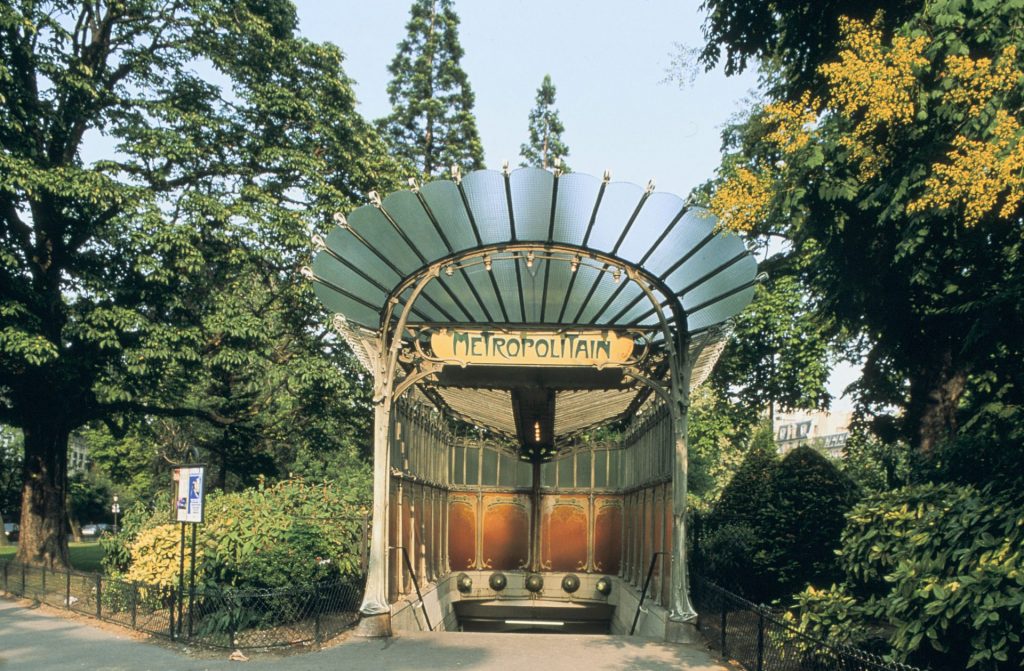
Below ground, there was no point pretending the Métro was in any way natural, hence the clean modernity of the white tiles, embellished slightly by the Nord-Sud company which, between 1910 and 1916, added an extra two lines – today’s 12 and some of 13 – to the early network. In Nord-sud stations, white tiles were offset by coloured ones surrounding the station names or as bands going over the station vaults. (Nord-Sud tiling survives at Solferino, Liège and Pasteur stations, among others.)
The Métro lost its nerve about the white tiles in the 1960s. It had a kind of mid-life crisis, and just as ceilings were being lowered and fireplaces in-filled during that self-consciously modern decade, so yellow steel panelling was introduced in some stations to conceal decaying white tiles. Elsewhere, white tiles were replaced with orange ones. Under the Renouveau du Métro programme, which began in 1999, white tiles are being restored throughout the system. As for the designs of the new Grand Paris Express stations, they are still evolving. Some will be community hubs rather than just stations; but lightness and whiteness seem to be common themes and, this being Paris, we can be sure that everything will be done in the best possible taste.
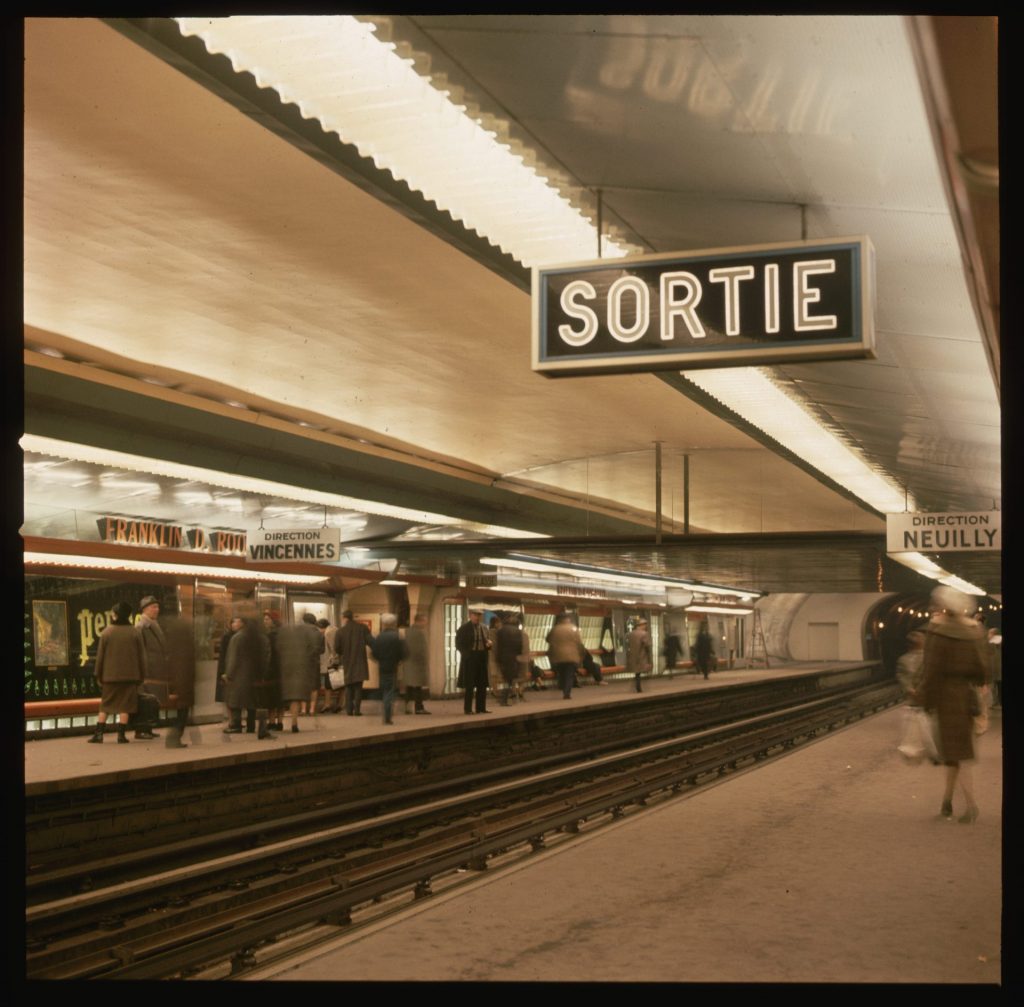
The stylishly spartan nature of the Métro stations is expressed in a chase scene in Jean-Pierre Melville’s film of 1967, Le Samourai, starring Alain Delon as an assassin with a minimalist aesthetic. He inhabits a world largely pale blue and grey. He wears a grey fedora; when looking to steal a car, he contemplates a pale blue Peugeot but settles for a grey Citroen; he lives in a grey flat, and smokes cigarettes from a pale blue packet (Gauloises). The chase takes place mainly on Line 11. Naturally, no orange stations are shown. At one point, Delon evades his pursuer by alighting from the train in the second before its departure – a trope repeated many times in subsequent films with diverse settings, but particularly suited to the Métro, which seems to operate on permanent fast-forward.
Throughput of trains is more frequent than on the tube; station dwell times are shorter. The trains sprint in and out of stations (on some lines, tyred wheels enable faster retardation) and the locals are particularly business-like in their boarding and alighting, the latter often accompanied by the clatter of a jump seat springing back upright. This unfussiness seems of a piece with the rapid swerving of Parisian waiters between restaurant tables, or the habit of turning the little money dish on the bar briskly upside-down when the customer has paid in cash.
That said, I prefer the Métro off-peak, when the views through the windows are unimpeded. Yes, views. Whereas the London Underground tends to go under the Thames, the Métro goes over the Seine: Line 6 does it twice, to the east and to the west, where – between Passy and Bir-Hakeim – the Eiffel Tower is part of the vista. Of course, the French don’t look up from their phones.
I usually visit a few of the 30 special, themed stations, in which advertising is not permitted. My favourite is Arts et Métiers station on Lines 3 and 11. The Line 11 platform promotes the engineering museum above and is all riveted copper, a steampunk fantasy, as if you were in the belly of Captain Nemo’s submarine.
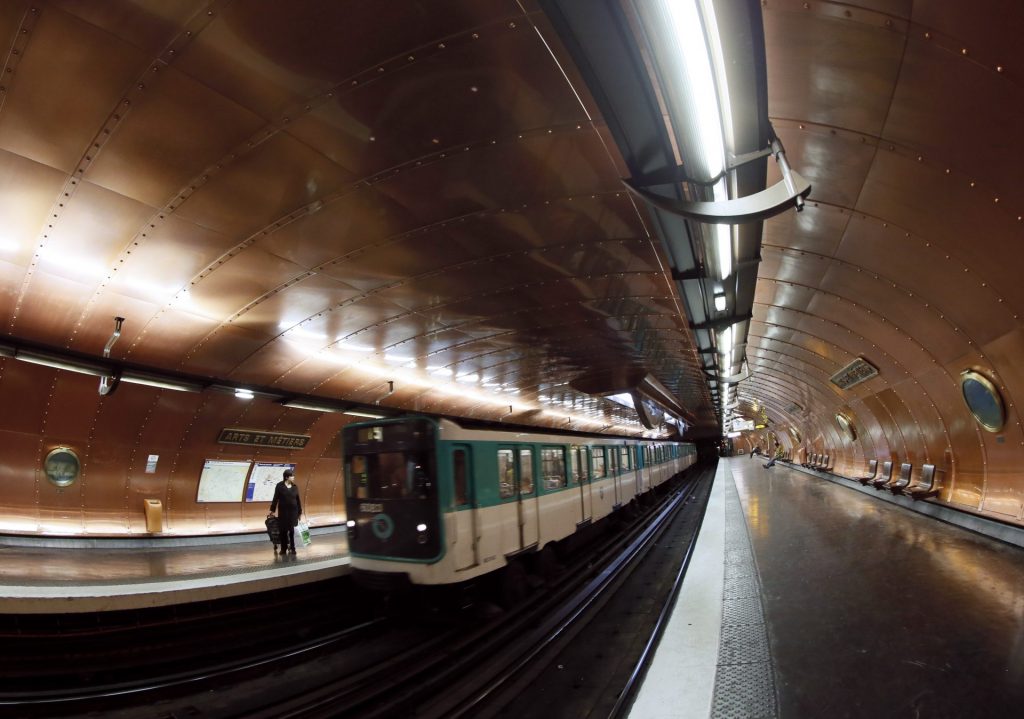
A friend of mine, Julian Pepinster, who is half-English, half-French, works for the Métro and is involved with an organisation called L’Ademas, which celebrates the Métro’s history and offers guided tours. I once attended a nocturnal tour, which began at the disused platform at Porte des Lilas station, and roved over the network, taking in closed-down stations, decorated with adverts for liqueurs, cigarettes, furriers and other decadent phenomena. The tour culminated at about 3.30am in a depot beneath Gare du Nord, where we were handed glasses of champagne as we entered an inspection pit to look at the underside of the train.
The strange thing about the participants was that they were not at all strange – not trainspotterish in the British sense. They were teachers, academics, as many women as men; at least one was a concert pianist. But then in France there is a widespread reverence for engineers and engineering, whereas elite English enshrined study of the classics, with technical subjects looked down on.
Julian Pepinster himself strikes me as a romantic in the mould of Bienvenüe. He once told me (over what he called a “serious” Parisian lunch) that “a Métro station is reminiscent of the wine cellar of a château, which is a very nice thing to be reminded of.” He explained that the terseness of early Métro style extended to not showing the station names at the street entrances. “Well, you were Parisian. You knew where you were.”
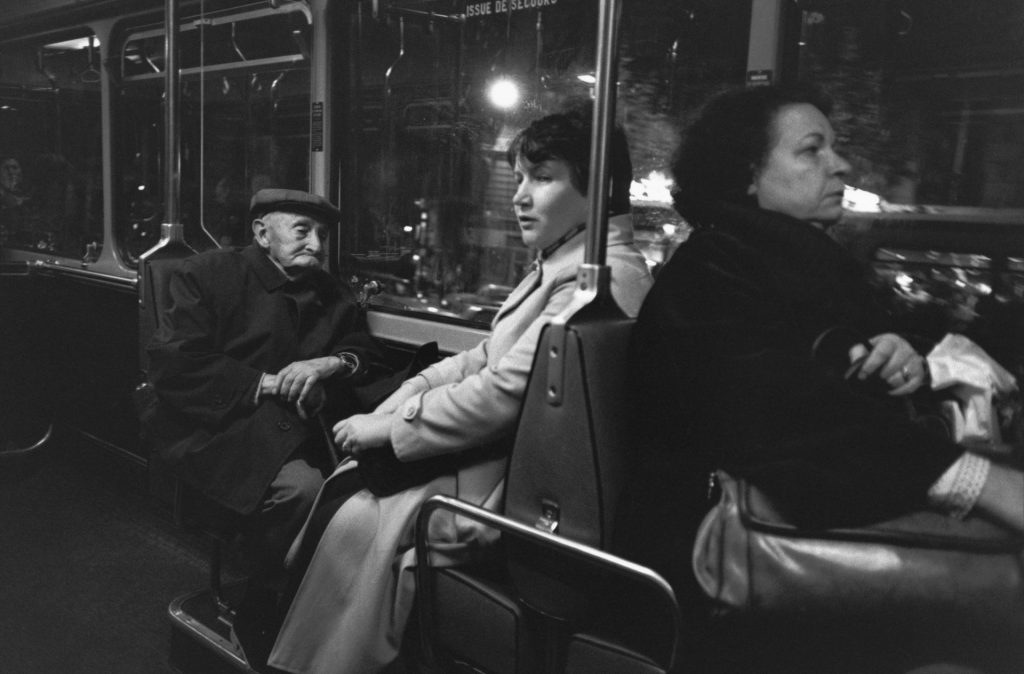
Until I go back to Paris, I can savour the Métro Map. What spectacular station names! In his book Promenades, the Francophile British historian Richard Cobb wrote of “The sheer extraordinary juxtaposition of names, Sèvres-Babylone, Les Filles du Calvaire, Barbès Rochechouart, which has got such an extraordinary sort of chuintement [hiss] about it, particularly when pronounced by a Parisian.”
Throughout lockdown, I have kept an unused Métro ticket in my wallet. When, on returning to Paris, I insert it into the barrier at Gare du Nord, civilisation will have started again.
Andrew Martin’s latest railway novel is Powder Smoke (Corsair). Among his non-fiction railway titles is Night Trains: The Rise and Fall of the Sleeper.

